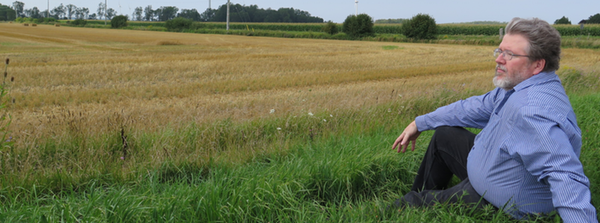Forgotten Commonwealths: Agrarian Legacies & Lessons (Chapter 3: The Plains Series)
“These developments are driven by dreams—of energy independence, economic recovery, political advantage, and profit. They coexist or clash with other dreams, some of which are born of recent concerns: food security, sustainable agriculture, re-wilding. Others revive far older matters: reassertion of Native sovereignty, a literal and figurative return of the buffalo, land claims. Ancient or modern, such dreams are haunted by figures and voices which make ghostly and sometimes distorted visitations to contemporary minds.”—By William Ramp
Small Things Recollected
By William Ramp
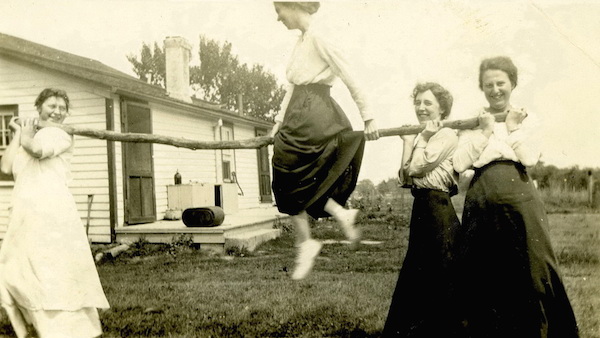
LETHBRIDGE Alberta, Canada—(Weekly Hubris)—3/2/2015—It seems that to be human in the modern era is to live in contradiction and to dream of transcendence. This month, I will tell a tale about dreams, visions, voices and acts which kindled these elements into a fire that blazed across the North American interior a hundred years ago.
These dreams no longer trouble North American culture or consciousness much. But ideas and initiatives fertilized by their ashes send stubborn shoots through cracks in the cement of Wal-Mart-ized and McDonaldized America, no matter how often trod upon. The question begged by this month’s story is whether these shoots can widen the cracks and bear edible fruit today.
In my August column, I lingered over the rationalistic surveying of farm property lots on the North American interior plains, and how property shaped the narratives and domestic tragedies of the families those lots later contained.
These small cells of private ownership both demarcated accomplishment and gave form to generational continuity and homestead mythology. Pride of possession could also shade into deep attachment. Many a rural emigré awoke to the urban night, racked by sobs, from dreams of lost farmscapes whose contours and boundaries forever shaped and horizoned the exiled subconscious soul.
But these same farmsteads could also be economic prisons on which men, women, and children were condemned to hard labor and constant worry. The agrarian poet Wendell Berry captured this dualism of attachment and burden in agricultural life, setting the word “care” in amber:
Enclosing the field within bounds
sets it apart from the boundless
of which it was, and is, a part,
and places it within care.
The bounds of the field bind
the mind to it. . . .
(Berry, A Timbered Choir: The Sabbath Poems 1979-1997)
Proprietorship also entailed forms of propriety which could burden farm families with the repeated necessity of sowing secrets and double messages, and maintaining structures of respectability to contain them from the eyes of lenders and curious neighbors. These were matters which, like enterprise and a work ethic, were commonly thought to entail rigid self-control. Paradoxically, this capacity was assigned to inherited “character” but also considered something to be beaten, in sorrow or rage, into recalcitrant and fallen children.
To all this mixture were attached costs and consequences, many of which entered rural folklore. There were those whose early deaths signified health ruined by overwork, hopeless toil, or constant anxiety. There were others who wandered away from horses and machinery, faces bright as the sun, proclaiming to those who came to restrain them that they had entered heaven above and now saw Jesus in all His glory in the uncut hay. There were farmers who took out their frustrations with fists and sticks on women, children and animals, or who murdered their families and themselves. Farmers and farm women slipped loudly or quietly into alcoholism and cirrhosis, into the stupors of laudanum, or into dementia. Sons and daughters ran away, squandered the legacy of a “good name,” or plundered the family nest-egg.
Lunatic asylums were as full of damaged rural souls as of urban ones, and families of rural proprietors, and tenants aspiring to proprietorship, like those of the urban middle classes, were filled with damage-control routines.
And yet, and yet, there were moments enough of conviviality, fun, happiness, even joy for the good to be remembered and the bad to be tempered by nostalgic, if often selective recall.
Along straight roads, orderly processions of farm houses, their barns grouped behind in L’s or U’s, gave impressions of peace, order and purpose that matched the wishes and also the quotidian experiences of many, if not all rural inhabitants.
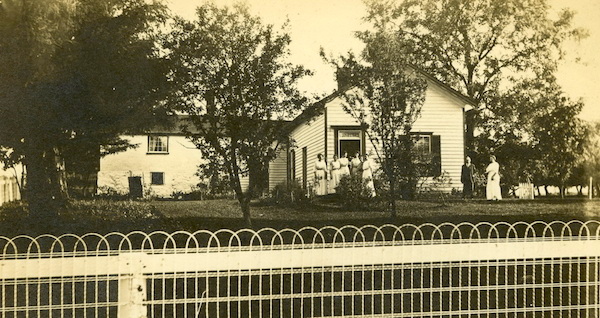
But the hardest work, the starchiest rectitude, and even the most winning kindnesses could not grant this arcadia to all aspirants, nor preserve them all safely in it. Recurrent financial crises, in 1815, ‘19, ‘25, ‘37, ‘47, ‘57, ‘66, and in 1901, ‘07 and ‘13; the episodic “long depression” from 1873 to 1896, and the Great Depression of the 1930s turned many agriculturalists, good and bad, into financial casualties. In bad times, property title could mean obligation rather than a ticket to freedom of use, enjoyment, and improvement: those unable to free themselves of that burden during depressions referred to themselves as “property-poor.”

The idea of property in land was, and still is, easily idealized. But, in the real world, real property rights have particular and often-troubled histories of legislation, application, and interpretation. Incursions on and expropriation of agricultural land for rights-of-way, mining, quarrying, damming, and oil extraction drove the point home—literally: for the agricultural smallholder, homestead property rights were relative to the power of those organizations which sought to contest them for opportunity, in the name of necessity.

The period from 1870 to the beginning of the 20th century is now known in the US as the Gilded Age, after the title of a savagely-critical social novel by Mark Twain. As today, so then—economic hardship was visited unequally on regions and populations. Oil, coal, and steel magnates, railway and beer barons, commodity-speculators and financiers inhabited enormous hilltop or coastal mansions far removed from the sources of the wealth that built them, and filled them with servants, hangers-on, and plunder from the cultural and artistic legacies of Europe, the Middle East and Egypt.
This was the era of the trusts; giant conglomerates with the economic clout to run competitors under and absorb them, to fix prices, to buy legislators, and to bury opposition. In city and country, farm and labor journalists took note of their doings, and farmers and laborers began to organize with a vision of a city on a hill informed more by Jerusalem than Xanadu. On their way toward it, lumber, railway and steelworkers, and especially coal miners, ran gauntlets of fists, billy clubs, even machine guns.
Similar economic and political fires boiled rural pots, too.
Railway grain-carriage rates gouged farmers, and machinery cost dearly. Stores in areas where geography limited choice racked prices and encouraged indebtedness. Weather and drought cooperated with foreclosure and the bailiff. County councils dominated by prominent families could and did pass tendentious bylaws and dispense particular favors. Alongside banks, local speculators issued or bought up mortgages, investing in debt-plus-interest and subservience for other uses. Farmer warred with farmer over twelve inches of strayed fence line, acres of stopped-up drainage, or wandering herds of cattle.
From the Deep South to Saskatchewan, political parties, religious sects, the Orange Order, and the Klan saw opportunity and exploited fears of failure or the unknown with warnings about religious, racial, or moral threats. Saloons and backroom gambling dens took in farmers thirsty after selling grain or cattle, and spat them, drunk, violent and cleaned out, on to the street.
In this fertile but over-tilled political soil, a particular form of authority took root, spread, and threatened to choke out the tender shoots of smallholder democracy and equity. Its stem was the patron-client relationship, through which local magnates, often themselves in political and economic hock to higher-ups, dispensed favors and loans, engineered council decisions, approved membership in clubs and cliques, or recommended patronage appointments in return for loyalty at election time.
These activities fostered a society of political or status “ins” and “outs,” often wearing ethnic, racial, and religious hues, oiled by deference but also nicked and dented by offence. Dispute over position and favor, and revenge against those who defied it or persisted in straying from their designated social or economic place might not be carried out as physically as in the Appalachian hills, but divisions could be bitter and long-remembered.
Sometimes, those divisions could be fatal, of course.
Lynching constitutes a deep stain on American history, and it did not occur only in the South. The same was true of vigilantism.
In 1880, a famous set of murders occurred in the village of Lucan, in southwestern Ontario, claiming five members of an Irish family which had committed the double sin of being violently troublesome to their neighbors and irregularly entrepreneurial. Investigations and the judicial process mysteriously stalled—and stayed stalled.
A distant cousin of mine, a long-time resident of the area, obliquely hinted in the 1980s that the perpetrators and their families were still known. But even a hundred years after, nobody was talking.
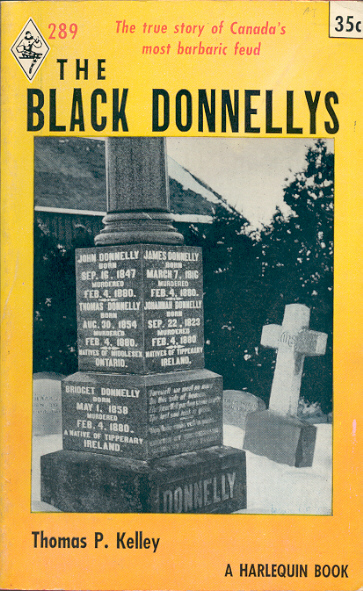
In response to these traumas, whether real, prospective, or imagined, many farmers and farm women in the Midwest, on the Canadian prairies, and along the lowlands of the St. Lawrence and Great Lakes turned to their own traditions of mutual aid.
Cooperation in tillage, harvesting, quilting, and barn-raising sowed in them the visionary seeds of a new order. In it, only weather would exercise caprice; not men. To voice it, they turned to sociology and history. To realize it, they sought to demolish prisons of division and debt and to replace them with education. They envisaged a vast and democratic network of mutual insurance, credit unions, dairy and cheese co-operatives, grain pools, and cooperative buying agencies.
From models such as the Chautauqua assemblies, Mechanics’ Institutes, and Danish folk schools, they developed discussion circles and schemes for mutual edification, adult education, and school improvement, guided by the conviction that learning needed to serve collective as well as individual advantage, to feed body, heart and mind; to be, in the popular folk-school slogan, a “school for life,” grounded in the soil.
These women and men were the agrarian progressives of the second North American Age of Reform. Many had paid the price of obedience to doctrines of 19th-century economic liberalism and to status competition, and now wanted instead to set their own terms: to be, collectively, themselves.
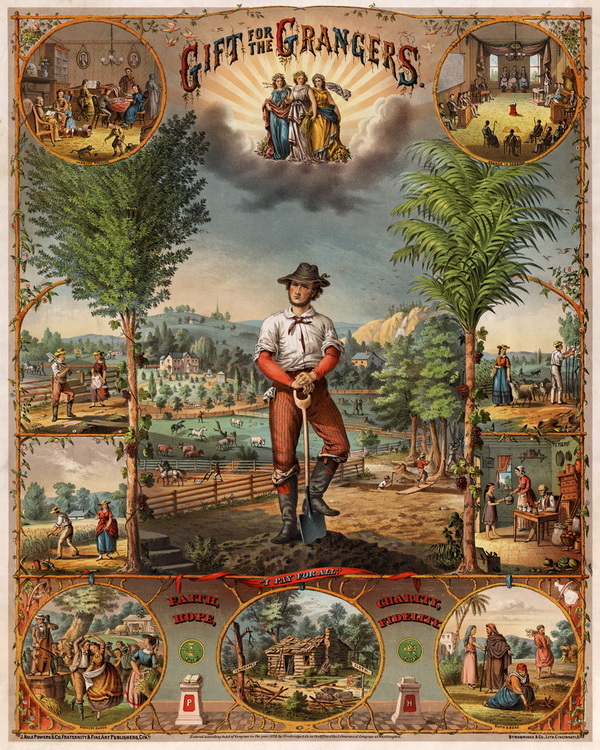
Agrarian organizations such as the Grange and the Patrons of Industry sprouted readily in the post-Civil War era, nourished by the hardships of the Long Depression in the 1870s and 1880s. They had a political genealogy reaching back to the ferments that preceded and followed the bank panic of 1837 (in Canada, the Mackenzie Rebellion and the Clear Grit liberalism it inaugurated and, in America, the allure of Jacksonian democracy, which outlasted Jackson’s own exit from office that year).
Culturally, they bore similarities to urban craft unions, even incorporating a few elements of secret-society lore and ritual. But from the 1890s, they and their descendant groups delved into economic ventures and sought political influence, not simply to redress grievances or to seek particular advantage, but to advance a vision, rooted deep in English history . . . of something they called a Cooperative Commonwealth.
In its broadest sense, this was a yeoman utopia founded on the Dignity of Agriculture and Mutual Aid, with one slogan engraved above all its entrances: “Equal Rights For All; Special Privileges For None.” From it, sectarianism, “partyism,” collusion, speculation, class inequality—and Drink—would be banished. Its economic visionaries, among them Silver Democrats and Single Taxers (followers of the economist-philosopher Henry George) promised new, equitable, and transparent fiscal and tax regimes. (Milk River, Alberta, a small town south of where I live, operated for years on a Georgist fiscal and tax system, courtesy of the effort and commitment of a prominent local agrarian.)
Agrarianism also had Southern roots, especially among smallholders who had suffered from the devastation of the Civil War and the injustices, real and perceived, of the carpetbagger era. But it also incorporated a more aristocratic element: the classical culture taught to sons of planters spread more widely by cultural osmosis, and Virgil’s Georgics, for example, became a staple of southern agrarian tradition.
On Canada’s east coast, Moses Coady, father of the Antigonish Movement, employed a new form of educative organizing to spread a mutual-aid gospel similar to the agrarian one, founding cooperative businesses in east-coast fishing and mining communities hard-hit by the 1930s depression.
For my purposes, though, the activist farmers and farm women of the midwestern and northern plains will take center stage here.
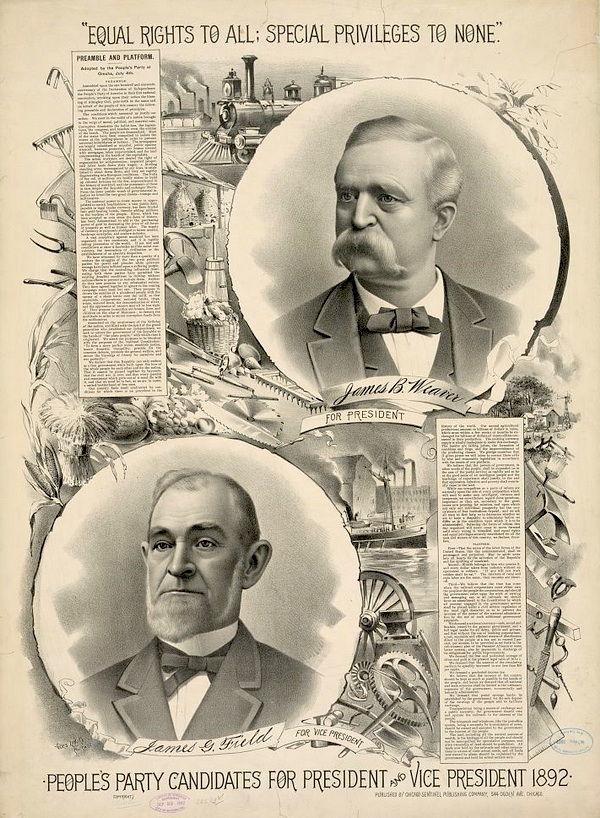
Amongst the literature produced by these agrarians were dramatic narratives, mixing fact, supposition, and fiction, about the city as a talisman and host of moral and economic failures: exploitation, division, ill-health and degeneracy.
There, wage-slaves toiled in dirty, ill-lit and dangerous factories, and were housed in dank, packed slums while captains of industry held parties in hillside mansions. There, pale children, deprived of sun and wholesome food, grew into spindly, coughing, addicted or criminal adults. There, farm boys and girls, lured by lights and promises of easy money, were snatched by agencies of vice: drink, drugs, gambling, and street-corner touts of “white slavery.” (Today’s interminable War on Drugs has a few agrarian roots; Prohibition had many.)
For agrarians, Gilded Age capitalism promised freedom but delivered bondage. It celebrated a negatively-competitive masculinity of bravado and show, dandyism and swagger, prejudice and threat, and militarism. Its stock figures were the denizens of the street, the bar, the gambling den, the commodity-exchange pit, the race-track, the party rally and the parade-ground. It also fostered a culture that divided urbanites from their country cousins, and caricatured agriculture and rural life as backward, stupid, and naïve: farmers were represented not as providers but as hayseeds, hicks, easy marks, and figures of fun.
The ultimate agrarian fear was that the city’s magnetism, contrasting to agricultural dullness and drudgery, and the poverty of rural schools, would drain the countryside of its young people, and also that urban economic institutions and their agents would turn the country into a rural slum, using debt and foreclosure to yoke farmers, reduced to tenancy, to new lords and masters.
To counter these nightmare visions, agriculture needed ways to gather and assert its economic autonomy, to make farming intelligent, to make rural life something that would fill rather than drain souls and bodies.
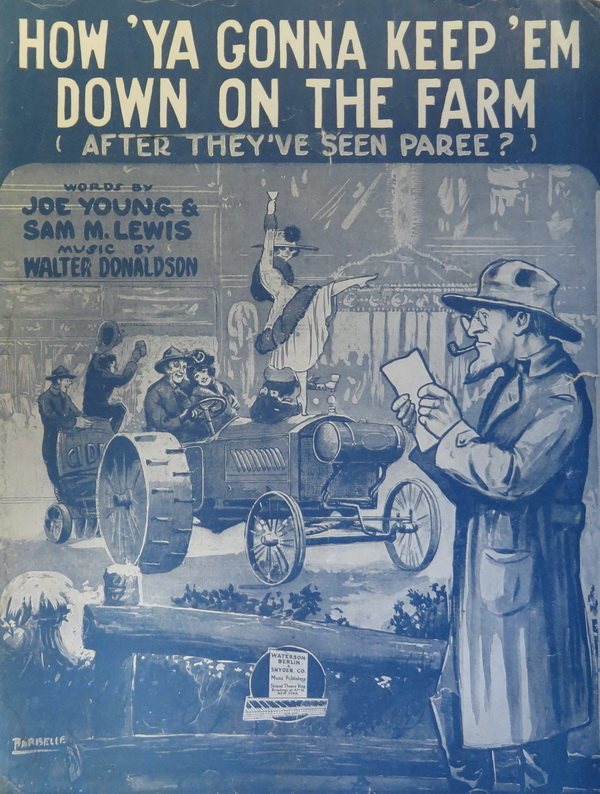
However, there were also agrarians—such as the Canadian politician, J. S. Woodsworth—who sought to save the city from itself, and they had urban allies. The turn of the last century was also an era of urban cultural and political ferment resulting in a heady reformist brew: the Garden City movement, neighborhood and community associations, Hull House, muckraking and reform journalism, and community-focused social studies (from which descended the Chicago School of Sociology, inspired by the botanical-community analogies of Frederic E. Clements).
A number of farmer-politicians sought the grail of cooperation between urban industrial labor and agriculture: urban groups such as the Knights of Labor had rural counterparts in the Grangers and the Patrons of Industry. In the early 20th century, the birth of mass industrial unionism had a parallel in pan-agricultural organizations such as the United Farmers, which won political power in three Canadian provinces and sent a strong (albeit less labor-friendly) contingent into federal politics in the form of the Progressive Party.
Progressivism in the US birthed similar coalitions, such as the pioneering Minnesota Farmer-Labor Party. It is not too strong a statement to say that agrarian progressives envisioned an entire political culture; an alternative version of the modern nation state.
A somewhat less politicized common cup was filled with the spirit of producer-consumer integration. This would have involved a kind of meta-cooperation between urban and rural cooperators; for example, the integration of producer co-ops and cooperative retail organizations in the food sector to cut out commodity-market speculation and middlemen. That grand scheme never fully developed; another innovation, the chain grocery store, crowded it out, and undertook its own brand of global integration.
The progressive farm organizations of the early 20th century soon developed women’s and youth wings—one of the initial tasks of the former was to be responsible for the latter. But organized farm women quickly gained a degree of independence from, and influence over, their male colleagues. They developed their own concerns, and their own solutions to them.
Universally, agrarian men and women saw hard work as a badge of honor. But, dull, repetitive, wearing, and easily mechanized labor was denounced as a gateway to stupidity. Agricultural work before mechanization depended on the muscle and endurance of men, women, and horses, and in the pace set by these, admittedly, there could be room for much reflection.
A story passed down in a branch of my family recounts a young university student, able to come home to help with field work, who tied Homer to the stilts of his plough. But ache, stiffness, and unending repetition told against the Romantic. Rest and respite provided only brief opportunity for reveries in which,
the air carries only birdsong, the long
draft of wind through leaves. In this time
I could stay forever. In my wish
to stay forever, it stays forever.
But I must go. Mortal and obliged,
I shake off stillness, stand and go back
to the waiting field, unending rounds.
(Wendell Berry, A Timbered Choir: The Sabbath Poems, 1979-1997)
Agrarian feminists had a parallel but unique take on work and mechanization. They sought to end the social and physical isolation of farm women, the drudgery of their work, and their economic dependence on men, through rural electrification and the new appliances it allowed, better rural roads, telephone cooperatives, home-economics education, and forms of agricultural production suited to domestic enterprise (gardening, eggs, cream, butter, fowl). They fund-raised for community hospitals (as more fitting memorials to the Great War, said one, than statuary), and promoted a grassroots civic education which was to begin within democratized families, continue through the extension of the franchise to women, and culminate in an international parliament . . . and world peace.
They also posed a range of ideas for social and moral reform. Many reflected the wisdom and prejudices of medical men and liberal preachers, but some were more radical.
Emma Griesbach, a columnist for the Farmer’s Sun, proposed that farm women institute cooperative kitchens and laundries to share the burden of cooking, baking, washing, and preserving—something that might have worked in her southern Ontario setting, but not on the vaster plains (and not likely in the minds of many men in the agrarian movement, to whom it must have sounded a bit too much like anarchism or communism).
In Canada, Irene Parlby, a United Farmers of Alberta member of the legislative assembly (and the first woman in the British Empire to hold a cabinet position in government) was one of the “Famous Five” who successfully lobbied for women to be granted the status of persons under the British North America Act.
It would take another half-century for another cause championed by the United Farm Women—spousal rights to farm property—to be fulfilled across Canada.
It is perhaps unsurprising that a significant percentage of the United Farm Women leadership was composed of former schoolteachers, many familiar with the deficiencies of small rural schools. This led them to advocate for consolidated rural schools, more accessible over improved roads.
Some mixed new educational ideas—getting children out-of-doors to learn from and respect nature, and to join hands and heart through practical education—with more radical proposals. Inspired by Danish folk schools, they debated banning examinations and homework, and redefining authority relationships between teachers and students.
Activist farm women also promoted adult-extension education, and correspondence courses in soil conservation, sociology, community-building, civics, public health, child-rearing, home finance, art appreciation, and the history of cooperation. They sponsored folk schools, community-based theatrical productions, guest speakers, debates, Youth Parliaments, public-speaking contests, and amateur sports leagues.
Ontario agrarian journalist (and former teacher) Emma Griesbach argued for the aesthetic education of farm women to rid them of an addiction to ugliness and kitsch in their choice of home furnishings and to inspire in them an appetite for intelligent art.
Agnes Macphail, also a former teacher and a stalwart of the United Farm Women, was the first woman to be elected to the Canadian Parliament, and spent her years there advocating not only for rural issues, but also for prison reform, old age pensions, and cooperatives. A Canadian representative to the League of Nations, she campaigned for disarmament and world peace; issues resonant with the agrarian symbolism of Isaiah’s prophecy that God’s judging “from among the nations” would lead them, repentant, to beat their swords into ploughshares.
More controversially, organized agrarian women supported the prohibition of alcohol for the same reasons they fought for reform of marriage and spousal-property laws: to address evils which not only ruined many farmers but also destroyed the economic and physical security of farm women and muted their political voices.
Men in the movement might have had certain mixed feelings on this topic: the illicit bottle of whisky kept in the cattle barn for “veterinary” purposes was the stuff of country humor in the Prohibition era. Nevertheless, a number of men refused to sell their grain to distilleries on the grounds that these transformed a foodstuff into a poison that corrupted politics, ruined health and morals, and inflamed division.
There is one great stain on the legacy of organized farm women, particularly in Canada. This was their avid support for a moralized social “hygiene” which incorporated widely-accepted racialist language and a condescending attitude toward non-Anglo-Saxon immigrants.
It was also characterized by an unshakeable certitude about eugenics. There was a uniquely agrarian twist to this faith: farm women familiar with the selective breeding of cattle and poultry saw little reason not to extend the practice, through education, social legislation and, if necessary, coercion, to human populations. But the more important influence was the vast literature produced by a coterie of influential medical, legal, and academic professionals.
Farm women who addressed social issues in the 1920s, schoolteachers especially, shared a firm and confident faith in the application of scientific solutions to social as well as infrastructural and production problems. They read and quoted Galton and his intellectual progeny, and took up eugenics as a self-evident badge of modernity and scientific progress.
In Alberta, the United Farm Women lobbied their own United Farmers of Alberta Government to pass a Sexual Sterilization Act in 1928. Generations of involuntary sterilizations of the “mentally defective” or incorrigible confined to Alberta institutions followed; the numbers, in hindsight, suspiciously skewed by class, gender, and race. The dark side of the emphasis agrarians placed on education was the way they thought about and treated those they deemed uneducable.
Both in Canada and the US, agrarian progressives shared other prejudices of their age.
They celebrated and repurposed pioneer culture: in Canada, the United Farmers styled themselves “new pioneers” in a new world of settled cooperative equity. The Progressive version of manifest destiny involved “civilizing” the plains and, for the most part, spared little thought to the fact that settler possession of farmland depended upon an earlier and continuing dispossession.
The United Farmers government in Alberta did convene an inquiry into the conditions of the Métis population, but had to be maneuvered into action on it by determined leaders of the Métis Association of Alberta.
In the United States, as Charles Postel notes, “whereas white Populists pursued racial uplift with the confidence of innate superiority, blacks pursued racial improvement with the bitterness of having all other paths closed . . . the color line mocked the Populist promise of equality” (Charles Postel, The Populist Vision, 2007, p. 174).
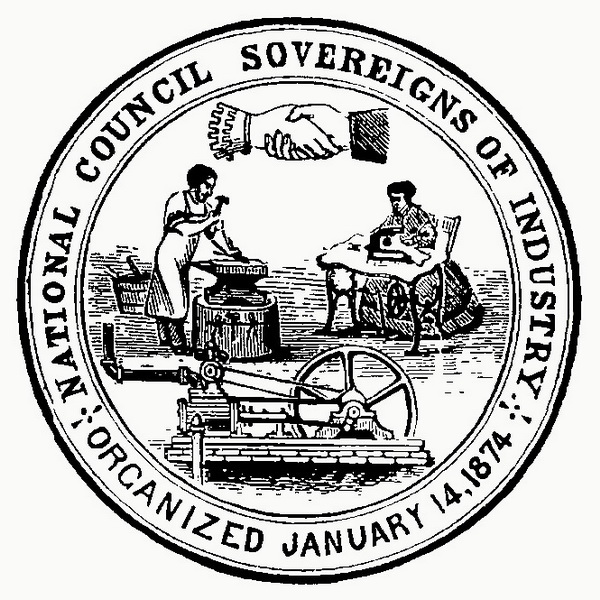
Canadian and American plains-dwellers were the rural backbone of early 20th-century Progressive activism. But as important as they were to its particular history, they also were nurtured by and fostered a multidimensional and international rural culture and a communicative world with its own newspapers, pamphlets and books, its own literature (a perennial favorite was Edward Bellamy’s 1888 utopian novel, Looking Backward, 2000–1887) and art.
They flocked to hear speakers on the history of cooperation (especially its British roots in the Rochdale and Owenite movements), the international cooperative movement (especially in Denmark), folk schools, agricultural conditions in Hungary and Russia, social justice and political reform in various jurisdictions, community sociology, the philosophy of money and taxation, and the future of agriculture in China. The German banking innovations of Friedrich Wilhelm Raiffeisen inspired credit unions not only in neighboring countries, but throughout North America.
They—the women especially—read novels such as Martha Ostenso’s Wild Geese (1925, reprint McClelland & Stewart, 1989), wrote poetry, columns, and letters-to-the-editor for both farm and sympathetic urban papers, and debated news and editorials. They sought to civilize the Plains but also respected and even loved the raw and terrible beauty of the land, the seasons, the summer storms and winter blizzards. To the music of songbirds, the harsh ululations of migrating geese, the whistling of swans, the clatter of machinery and the constant wind, they added a convocation of human voices; a celebration of work and common life in speech, song, art, and theater.
If many of the big grain pools and cooperative companies have long since been privatized and parted-out, other agrarian-progressive legacies persist more quietly in informal traditions of mutual aid, hardy cooperative associations, and rural churches.
Community land trusts, farmland conservancies, and community pastures, even when instituted by government, caught something of the spirit of agrarian cooperation, and still struggle to survive in a new economic universe. Credit unions and other consumer and producer co-operatives are still a vigorous part of the North American economic landscape.
Hardy agrarian-progressive survivors include an Alberta grocery cooperative, started by the United Farmers of Alberta, which operates a large number of competitive supermarkets in Calgary, proudly displaying a cooperative logo. In rural Alberta, the United Farmers of Alberta’s name still designates a major agricultural-supply and fuel retailer, run as a cooperative company with a philanthropic interest in the local communities it serves.
In Canada, Graham Spry, Alan Plaunt, Orville Shugg, and R. Alexander Sim, alumni variously of an agrarian newspaper and a 1930s spin-off from the United Farm Young People, were instrumental in the development of national public radio in Canada. Shugg and Sim mid-wifed the National Farm Radio Forum (NFRF); a unique combination of public-affairs broadcasting for rural listeners and a network of local discussion groups who fed back ideas and questions for subsequent shows.
As an infant, I slept on a pile of women’s fur coats while my parents participated in one of these groups. The NFRF format caught the attention of the United Nations Educational, Scientific and Cultural Organization (UNESCO), and it was emulated in India, Ghana, and France.
But these four young Canadians did not innovate in a vacuum: their United Farmers elders had for years promoted the idea of radio as a cultural public utility for education and civic mobilization.
The agrarians thus did more than respond to injustices, perceived and real, that Plains farmers and their families suffered at the hands of railroads, banks, equipment manufacturers, commodity speculators, and corrupt politicians. They built for the future. But their dreams and plans carried injuries and contradictions, some acknowledged; some not. They never resolved the dualism characteristic of North American farm culture: communitarian but independent, sharing but acquisitive, socially-minded but careful of boundaries, helpful but ornery.
They sought collective political power, but often refused to discuss politics or religion at the dinner table. I think these dualities reflected split allegiances to self and neighborliness, private property and the commons, individualism and cooperation . . . and to land as a focus of attachment, love and stewardship, but also to land as a commodity; an economic asset.
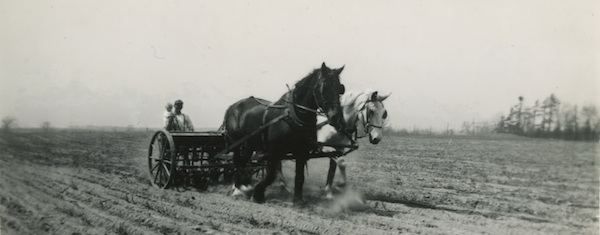
These contradictions and blind spots—and the fact that agrarian progressives shared the Plains with reactionaries of various sorts—made it easy for urban commentators to travesty them.
The easy association of American progressives and rural people with the ill-starred career of William Jennings Bryan of Monkey Trial fame also did lasting damage.
Richard Hofstadter, in The Age of Reform (1955), and Anti-intellectualism in American Life (1963) characterized agrarianism, in a selective reading, as resentful, nativist, anti-semitic and unlettered.
Similar charges were repeated north of the border by Canadian sociologist S. D. Clark, who lumped farmers’ movements with “forms of frontier protest” such as “religious sectarianism, vigilantism, medical quackery, mob rioting, tax evasion, smuggling and political apathy,” all sharing an “underlying sense of irresponsibility with respect to the affairs of the larger community.” (Clark, “The Frontier and Democratic Theory,” Transactions of the Royal Society of Canada, Vol. XLVII, III, 1954). Other historians, like Seymour Martin Lipset and, more recently, Charles Postel, were more discerning, but still rowed against a strong current.
But is there, perhaps, a deeper wound, a fatal flaw that affects communities and community organizing more universally.
To form a community necessitates defining it somehow, and to define it is to fence it.
The sociologist Emile Durkheim argued that the formation of collective groups entails a sense of leaving or being cast out of a cosmic totality. The group gains a particular identity, but at a cost that has to be paid. In ancient Rome, for example, ritual processions were vehicles for gift-giving to the gods at boundary markers (termini). Similarly, the common riding, a civic boundary ritual in Scottish Border towns, might have a more primordial meaning than commemoration of protection against cattle-thieving enemies during the 1500s.
The cosmos from which a particular territory and identity is taken must be—continually—repaid.
To form a group, Durkheim implies, is to owe.
Italian political philosopher Roberto Esposito makes a similar point: that community-making entails a sort of immunization. Those outside a community’s defining boundaries must be kept from dissolving or breaching them. But those who are within, says Esposito, also owe each other: They are united in community by mutual obligation. To be mutually obligated is to be particularized as giving and receiving individuals. But to engage in mutual aid or exchange is to risk the boundaries defining one’s particularity, as things and people pass back and forth; as people depend on each other. Hence the traditional fear of the poisoned gift, and contemporary popular fears, often exaggerated, of contagion. Hence, also, purity laws. Hence, fear of betrayal.
Arguably, the Jubilee tradition of ancient Israel (see Leviticus 25:8-13)—a celebratory freeing of slaves and return of familial lands every half-century—was one way of periodically releasing both individuals and community from bondage to such obligation and its attendant fear. Perhaps some version of it merits reconsideration today.
As I read it, the implication of Esposito’s argument is that communities, including political communities, carry within them real or imagined viral agents of their dissolution, and thereby continually incite protective policing that—paradoxically—can be destructive both to individuals and to the group. And it has to be said that when one moves from dreams and visions to historical realpolitik, one quickly stumbles over constant internecine conflict within farmers’ movements—like the bitter one in Ontario that destroyed a United Farmers government; a dispute over “broadening out” versus political purity in which there were no winners.
Irene Parlby spoke for many agrarian leaders when she identified the philosophy of her movement as idealism. She meant it positively, but one can also see how idealism might have involved a disinclination to examine too closely seeds of self-destruction which were only half-understood. But let us not discredit the impulse entirely.
Wendell Berry, more skeptical of high-flown utopianism, nonetheless voices his own wish for a different ending; a field enclosed “within bounds,” but wearing,
the green veil of a season’s
abounding. Open the gate!
Open it wide, that time
and hunger may come in.
(Berry, A Timbered Choir: The Sabbath Poems 1979-1997)
In the latter part of the 20th century, the dispossession that settlement had visited on the first peoples of the Plains returned to visit the descendants of the settlers who had displaced them; as though a kind of cosmic foreclosure on an unpaid debt.
Financial crisis, drought, and the consolidation of agricultural and food industries, along with mechanization, did in the quarter-section farm and emptied thousands of rural towns and villages.
On two eerie drives through Montana and Saskatchewan, I stopped in some of these settlements. In Montana, in the daytime, I drove down a street on which a 7-Eleven and a liquor store appeared to be the only inhabited buildings. In a soft Saskatchewan dusk, I turned off the Trans-Canada highway into a townscape of intact turn-of-the century houses on arrow-straight streets, where the only activity was a lone deer pacing through abandoned yards. A once-thriving village that cousins of my grandparents had called home is remembered by a granite plinth with a plaque, engraved with an image of the local school. Not a building remains.
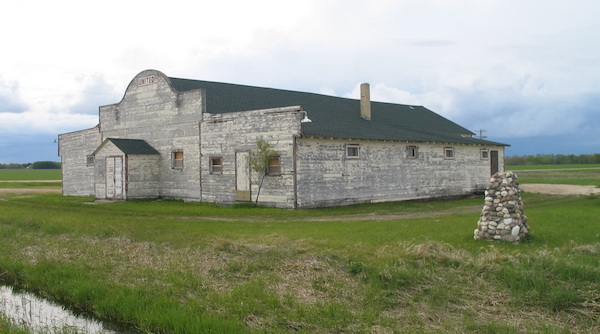
The countryside surrounding these abandoned places is more productive than ever, incorporated into mechanical-chemical-digital husbandry systems practiced on farms 20 times the size of the old quarter section. But in the attics or on the floors of abandoned houses and community halls, pamphlets, posters and books not gathered into museums crumble into dust. The old culture of hired hands and grain-harvest gangs by turns exuberant and bitter, innovative and illicit, hard-working and resistant, is gone. The voices of young people’s associations, women’s groups, farm forums and chapter meetings, are stilled.
At the turn of this century, I was privileged to hear the last of them: before I was called to the podium to address a rural symposium, an octogenarian veteran of the United Farm Young People commandeered the stage piano and belted out, with ornate flourishes and accompaniment by three or four of his companions, a farmer anthem of their youth:
Men of the soil! We are coming in judgment
To tell the world till justice rules, there is no liberty.
We in our strength are arising as prophets,
Marching on to show the world the dawn that is to be.
There’s a lightning in the sky. There’s a thunder shouting high;
We will never stop until the sons of men are free.
In my next column, I will bring this story forward to ask about what connections or contradictions there might be between this legacy and the human and ecological futures of the Plains. What prophecies might our ancestors have for us and our children today? What consequences of their actions visit us still? What questions and responsibilities do their histories give us?
What dreams now speak about, for, or over, the plains?
 Acknowledgements
Acknowledgements
I’d like to dedicate this column to the memory of Robert Alexander (Alex) Sim, farmer, rural activist, sociologist, author and educator, who gave me many a lesson in agrarian history and present-day rural issues, along with gruff life-lesson advice about preparation, decisiveness, and following through. In his long life, Alex carried forward the best of agrarian progressivism, though not uncritically. He wasn’t shy to correct my own romanticizing, and I still learn from his remembered words.
For the story of Milk River’s experiment in Georgist economics, I am indebted to Devon and Clayton Smith. The point about the cultural division between city and country, and the negative stereotypes assigned to farmers, is well told by Keith Walden (reference below). On Frederic C. Clements, see Sharon E. Kingsland (reference below). For the point about farmers refusing to sell grain to distilleries, and much else, I am indebted to Kerry Badgley (reference below).
Note Regarding Photographs
Photographs 1, 2, 4, 8 and 10 derive from the author’s private collection; Photograph 3 is used courtesy of M. E. Doughty; Photograph 5 derives from http://canadianfly-by-night.blogspot.ca/search/label/Thomas%20P.%20Kelley; Photo 6 from http://en.wikipedia.org/wiki/History_of_the_United_States_%281865%E2%80%931918%29#mediaviewer/File:Gift_for_the_grangers_ppmsca02956u.jpg; Photo 7 from http://en.wikipedia.org/wiki/People%27s_Party_%28United_States%29#mediaviewer/File:1892PopulistPoster.png; Photo 9 from http://en.wikipedia.org/wiki/Sovereigns_of_Industry#mediaviewer/File:Sovereigns-seal.jpg; Photo 11 is used courtesy of Gordon Goldsborough (http://www.mhs.mb.ca/docs/sites/farmerscommunityhall.shtml).
References & Further Reading
On the histories of agrarian movements and their concerns, in general and by region, see:
—Richard Allen, The Social Passion: Religion and Social Reform in Canada, 1914-28 (University of Toronto Press, 1971)
—Kerry Badgley, “Ringing in the Common Love of Good”: The United Farmers of Ontario, 1914-1926 (Montreal and Kingston: McGill-Queen’s University Press, 2000)
—Adam Crerar, “Ties that Bind: Farming, Agrarian Ideals, and Life in Ontario, 1890-1930,” Ph.D. Thesis, Department of History, The University of Toronto, 1999
—Terry Crowley, “J.J. Morrison and the Transition in Canadian Farm Movements in the Early Twentieth Century,” Agricultural History, 71 (1997)
—Terry Crowley, “The New Canada Movement: Agrarian Youth Protest,” Ontario History, 80 (1988)
—Lawrence Goodwyn, The Populist Moment: A Short History of the Agrarian Revolt in America (Oxford University Press, 1999)
—Steven Hahn, The Roots of Southern Populism: Yeoman Farmers and the Transformation of the Georgia Upcountry, 1850-1890 (Oxford University Press, 2006)
—Matthew Hild, Greenbackers, Knights of Labor, and Populists: Farmer-Labor Insurgency in the Late-Nineteenth-Century South (University of Georgia Press, 2007)
—Murray Knuttila and Bob Stirling, eds., The Prairie Agrarian Movement Revisited (University of Regina/Canadian Plains Research Centre, 2007)
– Seymour Martin Lipset, Agrarian Socialism: The Cooperative Commonwealth Federation in Saskatchewan : a Study in Political Sociology (University of California Press, 1971)
—David Laycock, Populism and Democratic Thought in the Canadian Prairies, 1910 to 1945 (University of Toronto Press, 1990)
—C. B. Macpherson, Democracy in Alberta: The Theory and Practice of a Quasi-Party System (University of Toronto Press, 1953)
—Ian Macpherson, Each for All: A History of the Co-operative Movement in English Canada, 1900-1945 (Macmillan Canada, 1979)
—S.J.R. Noel, Patrons, Clients, Brokers: Ontario society and politics, 1791-1896 (University of Toronto Press, 1990)
—Walter Nugent, The Tolerant Populists: Kansas Populism and Nativism, 2nd. ed. (University of Chicago Press, 2013)
—Russel B. Nye, Midwestern Progressive Politics: A Historical Study of its Origins and Development, 1870-1958 (Michigan State University Press, 1959)
—Jeffrey Ostler, Prairie Populism : the Fate of Agrarian Radicalism in Kansas, Nebraska, and Iowa, 1880-1892 (University Press Of Kansas, 1993)
—Charles Postel, The Populist Vision (Oxford University Press, 2009)
—Bradford James Rennie, The Rise of Agrarian Democracy: The United Farmers and Farm Women of Alberta, 1909-1921 (University of Toronto Press, 2000)
—Susan Sessions Rugh, Our Common Country: Family Farming, Culture, and Community in the Nineteenth-Century Midwest (Indiana University Press, 2001)
—Mildred A. Schwartz, “Cross-Border Ties Among Protest Movements: The Great Plains Connection,” Great Plains Quarterly, 1997.
—Richard M. Valelly, Radicalism in the States: The Minnesota Farmer-Labor Party and the American Political Economy (University of Chicago Press, 1989)
—Keith Walden, Becoming Modern in Toronto: The Industrial Exhibition and the Shaping of a Late Victorian Culture (University of Toronto Press, 1997)
—Louis Aubrey Wood, A History of the Farmers’ Movements in Canada: The Origins and Development of Agrarian Protest, 1872-1924 (Reprint: University of Toronto Press, 1975)
—Raymond A. Young, Cultivating Cooperation: A History of the Missouri Farmers Association (University of Missouri Press, 1995)
On the history of the idea of a co-operative commonwealth, see:
—David Rollison, A Commonwealth of the People: Popular Politics and England’s Long Social Revolution, 1066-1649 (Cambridge University Press, 2010)
On agrarian feminism, see:
—Janet Galligani Casey, A New Heartland: Women, Modernity, and the Agrarian Ideal in America (Oxford University Press, 2009)
—Monda Halpern, And on That Farm He Had a Wife: Ontario Farm Women and Feminism, 1900-1970 (Carleton University Press, 2002).
—Monda Halpern and Sonia Halpern, “‘Art Should Always Ennoble:’ Emma Griesbach and Art Appreciation in the Women’s Page of The Farmers’ Sun,” Ontario History, CIII, 1 (2011)
For a sense of the ideas and concerns entertained by agrarian progressives and their urban compatriots, see:
—Phillip J. Bryson, The Economics of Henry George: History’s Rehabilitation of America’s Greatest Early Economist (Palgrave-Macmillan, 2011)
—H. W. Foght, The Danish Folk High Schools. Washington: United States Bureau of Education, Bulletin, 1914, No. 22
—Mary Parker Follett, The New State (Longmans, Green & Co, 1918) http://openlibrary.org/books/OL6612696M/The_new_state
—Sharon E. Kingsland, The Evolution of American Ecology, 1890-2000 (Johns Hopkins University Press, 2005)
—Edwin C. Hagenstein, Sara M. Gregg and Brian Donahue, eds., American Georgics: Writings on Farming, Culture and the Land (Yale University Press, 2011)
—Charles C. Hill, “Mortgaging Canada: George Reid’s ‘Mortgaging the Homestead’ and the 1891 federal election,” Journal of Canadian Art History, 32(1), 2011
—John MacDonald, The Community: First Steps in Sociology (J. M. Dent & Sons, 1938)
—John MacDougall, Rural Life in Canada, Its Trends and Tasks (University of Toronto Press, reprint, 1973)
—Nellie L. McClung, In Times Like These (Reprint: University of Toronto Press, 1972)
—William Ramp and Kerry J. Badgley, “‘Blood Money’: Gambling and the Formation of Civic Morality,” in J. Cosgrave and T. Klassen, eds., Casino State: Legalized Gambling in Canada (University of Toronto Press, 2009)
—R. Alexander Sim, Land and Community: Crisis in Canada’s Countryside (University of Guelph, 1988)
—Newell L. Sims, The Rural Community, Ancient and Modern (Charles Scribner’s Sons, 1920)
—Keith Walden, Becoming Modern in Toronto: The Industrial Exhibition and the Shaping of a Late Victorian Culture (University of Toronto Press, 1997)
—J. S. Woodsworth, Studies in Rural Citizenship (Winnipeg, Canadian Council of Agriculture, nd[1914?])
—J. S. Woodsworth, “My Neighbour: A Study of City Conditions, A Plea for Social Service,” (Missionary Society of the Methodist /Church, Forward Movement, 1911)
On the embrace of eugenics by agrarian progressives, see:
—Jana Grekul, “The Right to Consent? Eugenics in Alberta, 1928-1972” in Janet Miron (ed.) A History of Human Rights: Essential Issues (Canadian Scholars’ Press, 2009)
—Jana Grekul, Harvey Krahn and Dave Odynak. “Sterilizing the ‘Feeble-Minded’: Eugenics in Alberta, 1929-1972,” Journal of Historical Sociology, 17(4), 2004
—Rachel Shields, “(Re)Imagining History and Subjectivity: (Dis)Incarnations of Racialised Citizenship,” M.A. thesis, Department of Sociology, The University of Lethbridge
On the idea that the formation of the modern nation state involved a “cultural project” (and resistive responses to it), see:
—Philip Corrigan and Derek Sayer, The Great Arch: English State Formation as Cultural Revolution (Blackwell, 1985)
For three contrasting accounts of the dynamics of community and co-operation, see:
—Roberto Esposito, Communitas: the Origin and Destiny of Community (Stanford University Press, 2004)
—Robert D. Putnam and Lewis M. Feldstein, Better Together: Restoring the American Community (Simon and Schuster, 2003)
—Richard Sennett, Together: The Rituals, Pleasures and Politics of Co-operation (Yale University Press, 2014)
And finally, if you are intrigued by my reference to agrarian progressive participation in a multidimensional rural culture and a communicative world with its own literature, please do visit this initiative to rescue and make available again “small things forgotten” that were once vital elements of that world:
From their blurb—“Out of print for decades, and long-since discarded from all but research university libraries, wonderful works of rural based literature are disappearing every day. . . . Written before the age of digitization, these works are being lost before they can be saved. To lose them is to lose a piece of our collective history; a piece of who we are, as a people and as a nation. The Rural Lit RALLY Initiative, from its inception as a tangible effort in April 2011, has worked hard to renew interest in this important part of our nation’s memory.”
